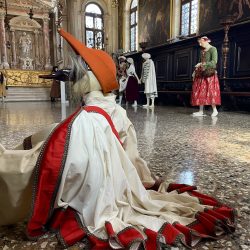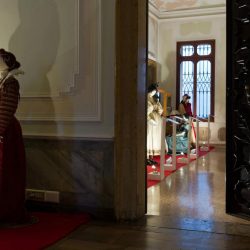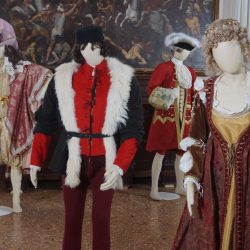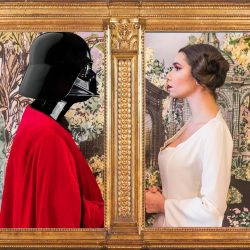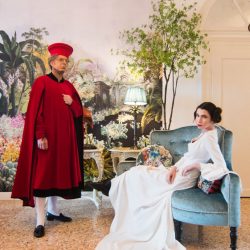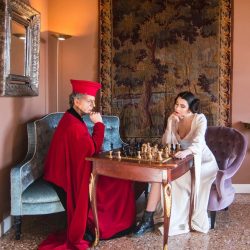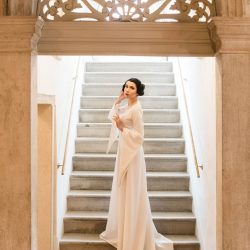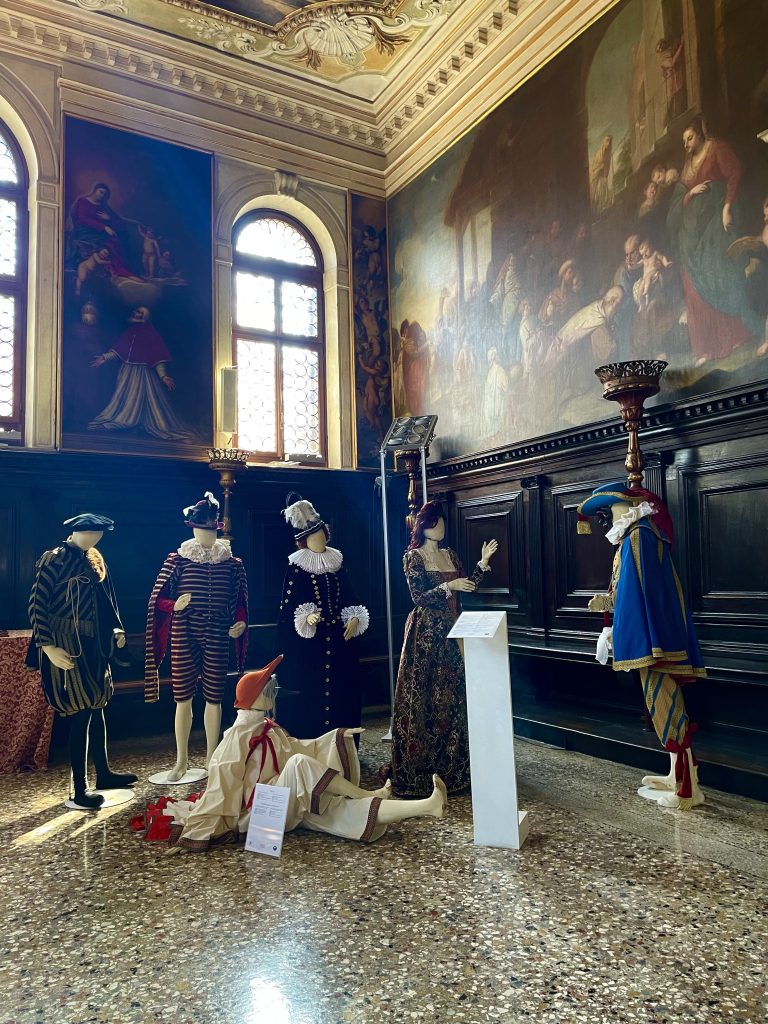
Exhibition “Fashion’s tales – Carnival in Venice”
Exhibition of historical costumes by Atelier Pietro Longhi, made by Francesco Briggi and curated by Raffaele Dessì
Info and reservations on www.pietrolonghi.com
The exhibition “Fashion Stories” will show for the first time all the social classes that lived in the Serenissima, thanks to cross-sections of the carnivals over the centuries. The propensity of the Scuola Grande to welcome representatives of all social classes, with a large presence of women, a very rare reality in the past, inspired the birth of an exhibition that was not limited in its description only to the high classes, usually in the center of the studies given the quantity of documents and the speed with which the shapes of the clothes changed.
The prestigious venue, unique in its kind and preciousness, the summa of Venetian Baroque architecture and art opens its doors to Francesco Briggi tailor of the Atelier Pietro Longhi, who made all the clothes with their accessories, and to Dr. Raffaele Dessì who oversaw the entire exhibition in terms of contents and set-up, allowing the creation of the exhibition “Fashion Stories – Carnival tales”. This exhibition tells the story of Venice through one of the most important characteristics of its material culture: clothing and the materials connected to it.
In 20 costumes, faithfully reproduced by Francesco Briggi from original documents or taken from paintings by the most important Venetian painters, it is shown how much trade first and then manufacturing art, linked to fashion, were the fundamental engine for the development and affirmation of the Venetian myth from the Middle Ages to the mid-1700s, up to the present day with excellences that are exported from the lagoon all over the world.
Three periods were examined: the early Renaissance, with the representatives of the “compagnie di calza” (stocking companies), followed by a section of the early 1600s, ending with a section dedicated to the famous Venetian Carnival of 1700, the engine of the rebirth in the ‘ 80 of the last century.
A selection of costumes that represent almost four hundred years of Venetian traditions, tales and stories, to be enjoyed together with the beauty of the Scuola Grande dei Carmini.
For info and reservations call 328 9706572 or write an email to pietrolonghi@pietrolonghi.com

(Italiano) “Storie di moda”
Ten years have passed since the first edition of “Storie di moda”, born from an original idea of Francesco and Raffaele that over the years have involved sponsors and institutions to show the Story in a different way. Through the lenses of fashion, the history of Venice, its architecture, its art, its wars and political changes have been known, from the Middle Ages to the present day.
Thanks to the encyclopedic knowledge of fashion and its evolution, other temporary exhibitions have developed from Korea to Argentina, with different themes, such as the symbols of power in Europe, for which precise studies have been done as well as on clothing on jewelry and iconography of different eras. But also of Napoleonic uniforms of different periods and degrees, so as to show the variety of uniformology to its dawn, or single pieces made to illustrate an era to complete a broader discourse.
The atelier therefore offers the complete service of developing a project or supporting an existing project. Historical materials and cutting tare used o explain, in an alternative way, different moments of human evolution, in every aspect and social class.

“Storie di moda”
Do you know that Princess Laila and Battista Sforza Montefeltro have the same hairstyle, or that Jedy is a medieval merchant, that Lady Oscar wears an Austrian uniform instead of a French one? Visiting Atelier Pietro Longhi we will reveal many of the hidden secrets behind the fashion of the capital of western luxury: Venice.
Shooting:ph: Simone Padovani, Location: Hotel Heureka, Makeup: Crisam Makeup Academy, Models: Giulia Boscolo, Luca Costantini





